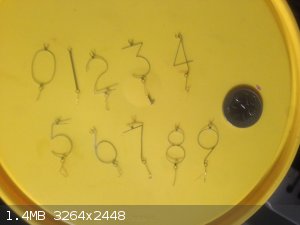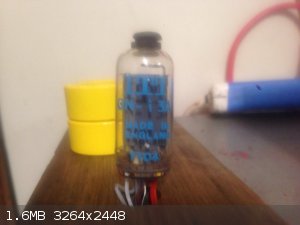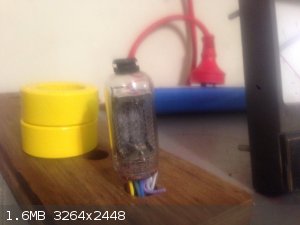
Panache - 13-10-2018 at 06:19
This hardly qualifies as technochemistry, so I am writing this with 'sweetness and light by itchi and scratchi playing in the background. (It's a
techno song)
So I have a few of these beautiful small valves that have these delicate numbers in them. I guess it was how they used to do numerical displays.
I would like to use them but what current and voltage could they be and/or how would I go about figuring it out practically.
The photos are are the front back of the valve and one I opened with the numbers out.
Thanks in advance for your help



Heptylene - 13-10-2018 at 06:23
Don't those have an existing datasheet online? Most electronics component have a datasheet with their characteristics. Otherwise you can try to guess
the voltage by running some tests of your own, probably no more than a few hundred volts.
Sulaiman - 13-10-2018 at 06:43
Manufacturer: ITT
Part number : GN-13A
Date : 1971 week 04
Stolen from the internet: Attachment: ITT_app_notes.pdf (3MB)
This file has been downloaded 439 times
nice dissection of a collectors item 
https://www.youtube.com/watch?v=UOx5SWJDxUI
[Edited on 13-10-2018 by Sulaiman]
Deathunter88 - 13-10-2018 at 07:18
Those are not valves, they are Nixie Tubes. There are whole forums dedicated to using them to build clocks and the like. Go join one, and you will
learn everything you wanted to know about them and more.
Panache - 13-10-2018 at 09:10
Thanks guys,
Well I guess they might be worth something to someone so I guess I'll have to donate them. I do like the name 'nixie tubes'.
For the record I was intending to open all of them until I opened one and realised they had numbers in them. I was just going to use the nickel mesh
in them for a alcohol mantle.
[Edited on 13-10-2018 by Panache]
sodium_stearate - 14-10-2018 at 07:48
Yes, those are nixie tubes.
They are filled with neon.
The numbers glow orange.
Typically they operate at 170 volts DC,
with a series resistance of around 15k ohms.
The anode is the back plate and the fine mesh cage
around the digits. Connect that in series with the 15k
resistor, and connect the other side of the resistor to +170
volts DC.
Then connecting any of the digit pins to the negative side
of the 170 volt DC supply will light that cathode.
They are basically cold cathode tubes containing
one anode and 10 cathodes. The cathodes are the
digits 0 through 9.
Typical current for small tubes such as the ones you
show is always somewhere around 1.5 to 3.0 mA.
No need to cut them open. Save them and use them.


